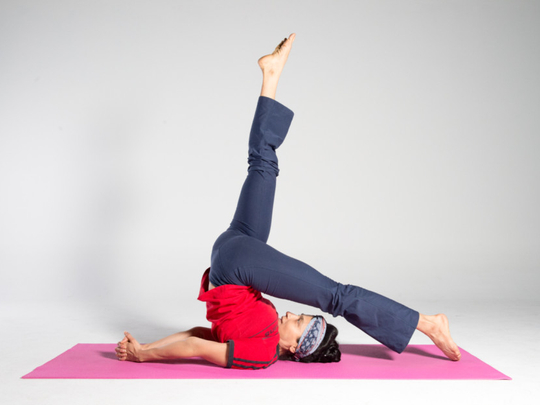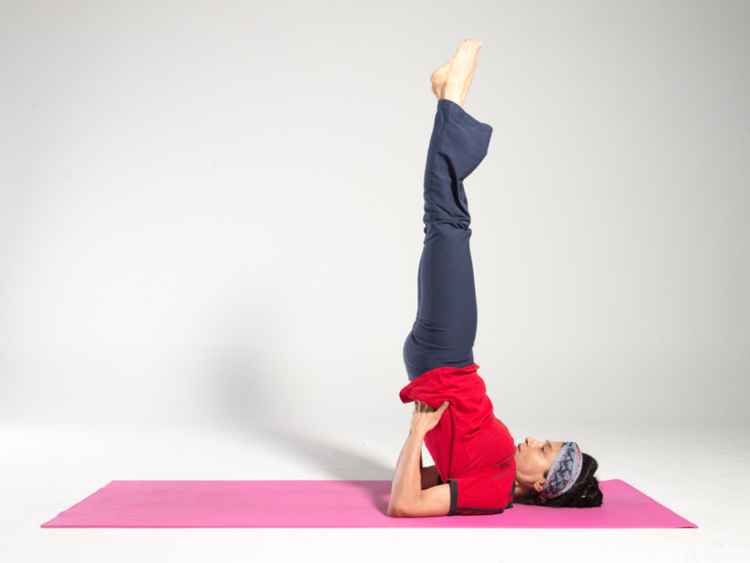
The idea of growing old gives rise to much apprehension. Nobody wants to grow old or look old. Science has discovered causes of premature ageing. They are worry, tension, inadequate rest, lack of exercise and wrong diet. It’s not just one but a combination of all. Hormonal imbalance is also one of the reasons, which hastens the ageing process.
We all abuse our body by leading an irregular life, far from what Nature tells us.
The body has a capacity to renew itself. There is a constant process going on in our body where it replaces the old cells with new ones. The rate at which the new cells are created depends on our way of living. Apart from living a healthy life, our mind, our thoughts are also responsible in the formation of new cells. It is because of this reason you will hear all gurus, healers, psychologists talk about positive thoughts and positive vibrations. Our psyche often has an influence over our physical appearance. Our mind has direct relation with our hormonal secretions, too. It has been famously said: “The influence of mind over body is, however, much greater than that of body over mind.”
Though ageing is a slow and constant process, by leading a disciplined life we can enjoy the elixir of youth for a prolonged period.
Let’s see what happens internally when we age?
The first thing which happens is we lose elasticity.
The elasticity of muscles play an important part in the preservation of youth. We may lose elasticity by accumulating large quantity of fats, which gets deposited over our muscles in an uneven way. This reduces the flexibility of muscles. We become stiffer and our body becomes less toned. The accumulation of fat happens because of eating wrong food and lack of exercise.
Bad digestion is also the cause for abdominal fat. The fat also get deposited around our vital organs like heart, stomach, bowels etc. This is called visceral fat. The abnormal volume of fat deposition prevents these organs from performing their functions at optimal level, as fat hinders the movement of these muscles. Heart, stomach, intestines are all muscles, so our whole body functions deteriorate and that results in various diseases.
The body’s elasticity also depends on the state of our blood vessels (arteries and veins). Gradual accumulation of sedimentary deposits such as lime, chalk in the arterial and venous walls causes loss of elasticity of blood vessels. This results in arterial sclerosis (that is blocking of arteries by chalky deposits) and in general deterioration of the physical body. This also occurs because of the lack of exercise, faulty breathing and wrong food.
Let’s see what happens to our bones?
At birth, a baby’s bones are made of elastic substance called cartilage. As the baby grows, bones become harder as this elastic substance gives way to harder mineral substances composed of phosphates and calcium carbonate. As we age our bones become less hard and brittle. So osteoporosis sets in. Weight bearing exercise, right diet and keeping hormone secretion at its right level helps in maintaining good health of bones.
Between the ages of 30 to 80, the weight of the muscles decreases by 30 per cent and likewise our strength. The number of fibers that compose a nerve reduces by one quarter and so all the physical functions of the body slows down. The muscles lose their strength, the heart pumps less blood and takes time to recuperate after a physical exertion. The lungs filter less air and so have to work harder to obtain the required quantity of oxygen.
After understanding the process of ageing, let’s turn our attention to the effectiveness of yoga, especially various breathing techniques (pranayama) that helps to rejuvenate our body. Researchers say that regular practice of yoga under proper supervision can change your look externally as well as the function of your body internally.
Yoga provides us with three weapons against premature ageing.
1) Inverted postures - In these postures, the volume of arterial blood reaching the head increases thus stimulating mental vigour, nourishes the skin and also prevents wrinkles. Postures like Viparita Karani or Legs Up the Wall Pose, Halasana or Plough Pose, Sarvangasana or Shoulder Stand, Sirshasana or Head Stand are inverted postures. Practice them regularly and reap the benefits. These asanas if performed in collaboration with proper breathing will have immediate effect. The asanas are useful not only to revive the body but it strengthens the nervous system and also helps in the smooth functioning of endocrine glands.
2) Pranayama - Controlled, deep, rhythmic, alternate breathing, and various other breathing techniques recharges your body with new vigour. Pranayama is one of the most important aspects of yoga. With the aid of pranayama we can transform cosmic energy into human energy. In all forms of life, from highest to lowest, prana is present as a living force. Without prana there is no life. Pranayama is not simply the breathing, but the control of the muscular force activating the lungs. Pranayama also helps in building immunity.
3) Well balanced diet - I have already discussed this in my earlier posts.
I will discuss pranayama in detail next week. Till then, remain healthy and young.
Editor’s Note: The blogger is a homeopath, lifelong vegetarian and high level yoga practitioner.
INVERTED POSES:
Plough pose or Halasana
How to do the pose:
Lie on your back with your arms beside you, palms facing downwards.
As you inhale, use your abdominal muscles to lift your feet off the floor, raising your legs vertically at a 90 degree angle. You are essentially getting into a shoulder stand.
Continue to breathe normally and supporting your hips and back with your hands, lift them off the ground.
Then slowly bend each leg towards your forehead.
Once that is stabilized, straighten your leg to touch the tips of your toes on the floor above your head.
Do the movements slowly. It can put pressure on your neck, so do not strain.
Benefits:
• Strengthens and opens up the neck, shoulders and back muscles.
• Reduces stress and fatigue.
• Tones the legs
• Stimulates the thyroid gland, strengthens the immune system
• Helps women during menopause
Contraindications:
Avoid practicing it if you have injured your neck, have spinal issues or have high blood pressure.
Women should avoid practicing it during pregnancy and during the menstrual cycle.
To be under supervision of an instructor only.
Shoulder Stand or Sarvangasana
How to do the pose:
If you have had abnormal blood pressure, glaucoma, detached retina, chronic thyroid disorders, neck or shoulder injuries, consult your teacher and physician before doing the shoulder stand.
Lie on your back with palms facing downwards.
Bend your feet, bring it parallel to your abdomen and lift your legs up, so that your bottom and back are lifted up.
You are resting only on your shoulders.
The entire movement has to be in a smooth, single move.
Support your back with your hands, elbows tucked in and slowly lift yourself higher as your hands move along your back. Your legs and spine should be as straight as possible.
Your weight is being supported by your arms and shoulders, no impact on your neck or head.
If there is pressure on either the head or neck, please move out of the posture.
Hold the posture from 30 seconds to a minute, as long as you can comfortably.
To come out of the posture, bend your knees, bring it to the forehead, slowly move your hands away from your back, to let it lie flat on the ground, palms facing downward. Then, slowly lower your back onto the ground.
Benefits:
• Stimulates the thyroid glands
• Strengthens the arms and shoulders and keeps the spine flexible
• Brings relief from constipation, indigestion and varicose veins
Contraindications;
Blood pressure, glaucoma, detached retina, chronic thyroid disorders, and neck or shoulder injuries, please avoid the pose.
This asana should be done under supervision by a yoga instructor.












